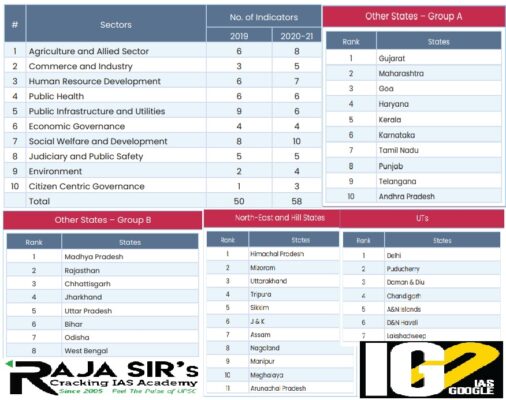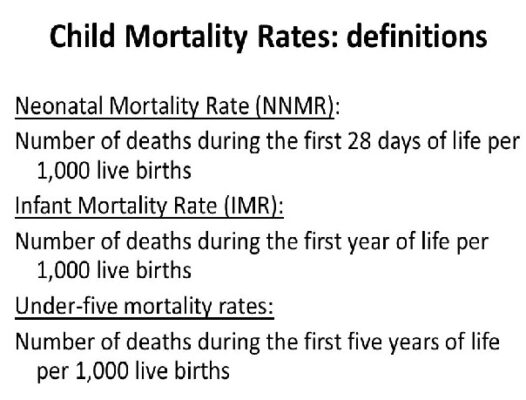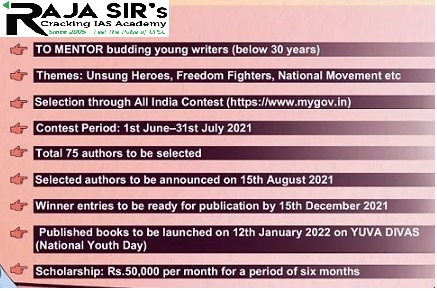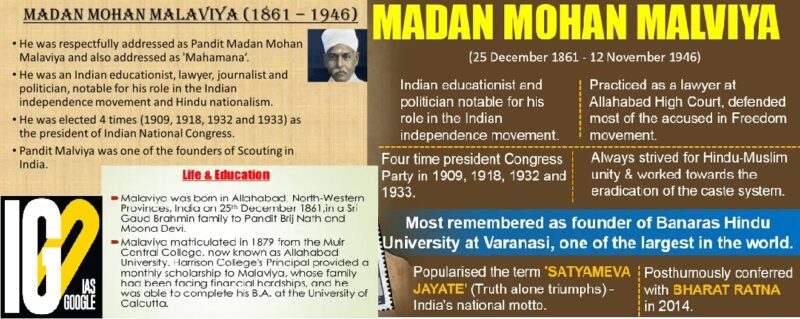- Home
- Prelims
- Mains
- Current Affairs
- Study Materials
- Test Series
Dec 27, 2021
GOVT HAS ISSUED ADVISORY TO CARMAKERS TO INTRODUCE FLEX-FUEL ENGINES IN VEHICLES: GADKARI
Recently, Union Minister said that the government has issued an advisory to carmakers to introduce flexible-fuel engines in vehicles.
 Highlights:
Highlights:

 Good Governance Index (GGI):
Good Governance Index (GGI):


 Right to be forgotten
Right to be forgotten


 Highlight of the report:
Highlight of the report:
 Findings of the study:
Findings of the study:
 Shyama Prasad Mukherji Rurban Mission (SPMRM)
Shyama Prasad Mukherji Rurban Mission (SPMRM)
 PM-YUVA Mentorship scheme
PM-YUVA Mentorship scheme
 Pandit Madan Mohan Malaviya
Pandit Madan Mohan Malaviya
 Highlights:
Highlights:
- India is framing policies to promote the use of clean fuels to meets its carbon reduction targets.
- It includes biofuels, ethanol blends as well as hybrid EVs and hydrogen fuel cells.
- India aims to boost the production and consumption of ethanol and ethanol-blended petrol.
- India has target of 20%ethanol-blending with petrol by 2023-24.
- India is one of the major consumer and importer (80%) of fossil fuels.
- Currently, Brazil and the US are two major markets where ethanol-blended fuels and flex-fuel engines are used predominantly.
- Flexible Fuel or E85 is a type of fuel used in automobiles.
- It is an alternative fuel made of a combination of gasoline and methanol or ethanol.
- The flex-fuel engines can run on both petrol and on biofuel as well.
- Flexible fuel vehicles (FFVs) have an internal combustion engine and are capable of operating on gasoline and any blend of gasoline and ethanol up to 83%.
- The most common commercially available FFV in the world market is the ethanol flexible-fuel vehicle.
- Property of Blending:
- It will allow vehicles to use different blends of ethanol mixed petrol available in different parts of the country.
- FFVs will allow vehicles to run-on unblended fuel.
- Alternative to Fossil fuels:
- The increased use of bio-fuels for vehicles can result in a decreased dependence on fossil fuels.
- A higher blending of ethanol in petrol will help cut oil import bill and also benefit sugarcane farmers as well as sugar mills.
- Environment friendly:
- Flex-fuel cars generates fewer toxic fumes into the environment.
- It also contributes fewer greenhouse gases, making it a more environmentally friendly option than traditional gasoline.
- It is claimed as less pollutant compared to petrol because of its biofuel nature.
- Sustainable Production
- The ethanol which is used in flex fuel vehicles is sustainably produced from ingredients such as cane sugar and corn.
- Tax benefit.
- Tax credit will be received for those using the environmentally viable flex-fuel vehicles.
- Engine damage.
- The hygroscopic nature of ethanol can cause corrosion and damage to the engine, mainly because it absorbs dirt easily.
- High Expense.
- Ethanol is also not as economical as gasoline, as it does not provide the same level of fuel efficiency.
- Problem with adaptability:
- Blending of the ethanol in required proportion mandates changes in vehicle configuration.
- Ethanol is not suited to high compression engines.
- The vehicles designed for low content of ethanol in petrol cars will result in lower fuel economy if used with higher fuel blends.
- Unavailability:
- There will be lesser number of fuel stations, due to uneconomical nature of flex fuels.
- Problems with Customer Acceptance:
- The cost of ownership and running cost is high for flex-fuel vehicles.
- The flex fuel vehicles could be more expensive than regular vehicles due to the upgradation of materials, engine parts and fuel system.
- Drawbacks of Ethanol:
- Ethanol acts as a solvent and could wipe out the protective oil film inside the engine which could cause wear and tear.
- Engines very specific to run in Flex fuel environment can lead to increase in cost of the engine.

- Need: Recently, states like Gujarat, Andhra Pradesh, Telangana, Bihar, and West Bengal existed from PMFBY, citing high Crop insurance premium.
- Combine mandate: To examine alternate risk management mechanisms for rationalising the premiums.
- Mandate of KR Manjunath committee: To explore the feasibility of the adoption of various technology-based approaches (including) drone technology for rationalising the premiums.
- Mandate of Saurabh Mishra committee: To conduct a cost-benefit analysis of all possible agriculture crop insurance scheme models. It will also provide financial projections for the next five years with corresponding assumptions in each model.
 Good Governance Index (GGI):
Good Governance Index (GGI):
- GGI is a framework to assess the State of Governance across the States and UTs which enables ranking of States/Districts.
- Prepared by: Department of Administrative Reforms and Public Grievances (DARPG).
- Aim: To create a tool that can be used uniformly across the States to assess the impact of various interventions taken up by the Central and State Governments including UTs.
- The Index provides a comparative picture among the states while developing a competitive spirit for improvement.
- The GGI 2019 encompassed 10 Governance Sectors and 50 Governance Indicators.
- For GGI 2020-21, the same Governance Sectors are retained while indicators have been revised to 58.
- Gujarat, Maharashtra and Goa top the composite rank score covering 10 sectors.
- It registered 12.3 percent increase and Goa registered 24.7 percent increase over GGI 2019 indicators.
- Gujarat has performed strongly in 5 of the 10 sectors including economic governance, human resource development, public infrastructure and utilities etc.
- Top 3 states: Madhya Pradesh followed by Rajasthan and Chhattisgarh
- Top 3 states: Himachal Pradesh, Mizoram and Uttarakhand
- Mizoram and Jammu and Kashmir have registered an overall increase of 10.4% and 3.7% respectively over GGI 2019.
- Delhi tops the composite rank registering a 14 percent increase over the GGI 2019 indicators.
- It has performed strongly in Agriculture & Allied Sectors, Commerce & Industry, Public Infrastructure and Utilities and Social Welfare & Development.

- It is a non-immigrant visa under the Immigration and Nationality Act, section 101(a)(15)(H).
- It allows U.S. employers to temporarily employ foreign workers in specialty occupations.
- Eligibility-It requires the application of specialized knowledge and a bachelor's degree or the equivalent of work experience.
- Duration-three years, extendable to six years.
- The individual can perpetually extend their H-1B visa by filing for an EB-1, EB-2, or EB-3 before the end of the fifth year.
- Applicants are selected for adjudication via lottery.

 Right to be forgotten
Right to be forgotten
- It allows a person to seek deletion of private information from the Internet.
- The concept has found recognition in some jurisdictions abroad, particularly the European Union.
- However, the right is not recognized by law in India.
- The Europe union in 2018 adopted the General Data Protection Regulation (GDPR), which provides for the right to erasure of certain categories of personal data which is considered no longer necessary and which consent has been withdrawn.
- Russia in 2015 enacted a law that allows users to force a search engine to remove links to personal information on grounds of irrelevancy, inaccuracy and violation of law.
- The right to be forgotten is also recognised to some extent in Turkey and Siberia, while courts in Spain and England have ruled on the subject.
- The court gave a new perspective to the Right to Privacy of the citizens.
- It was held that the Right to Privacy is a Fundamental Right under Articles 14, 19 and 21 of the Indian Constitution.
- The Joint parliamentary committee’s report contains provisions to the doctrine of the ‘right to be forgotten’.
- It gave verdict that the right to be forgotten and right to be left alone are inherent aspects of the right to privacy, and restrained republication of these news reports.
- It ordered its registry to ensure that any Internet search engine does not reflect a woman’s name.
- It ordered that allowing such objectionable photos and videos to remain on a social media platform without the consent of a woman is a direct affront on a woman’s modesty and more importantly her right to privacy.
- India’s agricultural mechanization levels, is at 40-45 percent unlike 90 percent in the developed economies.
- With a gap of 3.2 million tonnes in cold storage, the food processing industry incurred a loss worth USD 14 billion in 2018.
- 55 percent of India’s forests are prone to fire with 70 percent having no natural regeneration.
- To meet the dairy need, India is required around 600 million tonnes of milk per year in 2060.
- Smart innovation, infrastructure and policy support and newer business models can attract USD 272 billion in investments and generate USD 813 billion in revenue.
- India is at the biggest production risk with 68 % of the cultivation area being directly dependent upon the monsoon accounting for 40-45 % of total agriculture production.

- The Centre is a quadripartite alliance between NMCG, TERI, industry partners and industry representative bodies.
- It will be meeting the objectives of the Ganga Knowledge Centre (GKC) to foster research and innovation, including identification of knowledge gaps for research and supporting targeted research.
- It could bridge the current treatment gaps and provide safe treated water for reuse.

 Highlight of the report:
Highlight of the report:
- Sub-Saharan Africa and Southern Asia continue to face the highest risk of child mortality.
- More than 50 countries will not meet the under-five mortality target by 2030.
- In low- and middle-income countries, huge data gaps remain – two thirds (97 out of 135 countries) have had no reliable mortality data in the past 3 years.
- More than 5 million children died before the age of 5 in 2020 alone, along with 2.2 million children and youth aged 5 to 24.
- It was formed in 2004 to:
- Share data on child mortality
- Improve methods for child mortality estimation
- Report on progress towards child survival goals
- Enhance country capacity to produce timely and properly assessed estimates of child mortality.
- It is led by the United Nations Children’s Fund (UNICEF).
- It also includes the World Health Organization (WHO), the World Bank Group and the United Nations Population Division as full members.
- It explores socio-demographic factors as well as barriers in low coverage of institutional deliveries.
 Findings of the study:
Findings of the study:
- Poverty, education and exposure to a community health worker are more important than age of marriage in averting the risk of maternal mortality due to childbirth-related complications.
- Poverty is responsible more than twice as much as age at marriage in determining whether a woman will seek institutional delivery.
- Education is 1.5 times more important than age at marriage.
- Interaction with a community health worker and awareness campaigns also had a greater impact than age at marriage.
- India has a maternal mortality rate of 113 per 100,000and the rate is high in nine States at 161 deaths per 100,000.
- 9 low-performing States (LPS) with high burden of maternal mortality are— Assam, Bihar, Chhattisgarh, Jharkhand, Madhya Pradesh, Odisha, Rajasthan, Uttar Pradesh and Uttarakhand.
- These states contribute 62% of maternal deaths, 71% of infant deaths, 72% of under-five deaths, and 61% of births in the country.
- They also account for 12% of global maternal deaths.
- The influence of educational attainment is strongest in Assam and Chhattisgarh.
- 9 low-performing States (LPS) with high burden of maternal mortality are— Assam, Bihar, Chhattisgarh, Jharkhand, Madhya Pradesh, Odisha, Rajasthan, Uttar Pradesh and Uttarakhand.
- Lack of transportation, High cost of services, trust issues and facility closures.
- Lack of proper technical, human and institutional labour services.
- Need of State-specific interventions:
- There is need to increase the number of public health facilities and also to improve associated quality of care.
- Improved technical and skilled resources:
- Inadequate clinical training and insufficient skilled human resources affected the quality of available maternity services. Thus, there is need for improved technical and skilled resources.
 Shyama Prasad Mukherji Rurban Mission (SPMRM)
Shyama Prasad Mukherji Rurban Mission (SPMRM)
- Objective: To stimulate local economic development, enhance basic services, and create well planned Rurban clusters.
- Vision: Development of a cluster of villages that preserve and nurture the essence of rural community life with focus on equity and inclusiveness without compromising with the facilities perceived to be essentially urban in nature, thus creating a cluster of Rurban Villages.
- Aim: Create 300 rural growth clusters across the country.
- The project is envisaged to be funded through convergence of various Centrally Sponsored, Central Sector and State Government Schemes pertaining to the chosen components under the Mission.
- In addition to the scheme funds, Critical Gap Funding (CGF) is proposed to be provided through the Scheme funds to the clusters to bridge the gap posed by availability of scheme funds.
- The CGF would be capped at 30% of the capital cost or Rs 30 crores whichever is lesser.
- Bridge the rural urban divide- economic, technological and those related to facilities and services.
- Spreading development in the region.
- Attracting investment in the rural areas.
- Stimulating local economic development with emphasis on reduction of poverty and unemployment in rural areas.
- It would be a cluster of geographically contiguous villages with a population of about 25000 to 50000 in plain and coastal areas and a population of 5000 to 15000 in desert, hilly or tribal areas.
- Clusters of villages would follow administrative convergence units of Gram Panchayats and shall be within a single block/tehsil for administrative convenience.
- Skill development training linked to economic activities
- Agro Processing, Agri Services, Storage and Warehousing.
- Fully equipped mobile health unit
- Upgrading school /higher education facilities
- Sanitation
- Provision of piped water supply
- Solid and liquid waste management
- Village streets and drains
- Street lights
- Inter-village road connectivity
- Public transport
- LPG gas connections
- Digital Literacy
- Citizen Service Centres- for electronic delivery of citizen centric services/e-gram connectivity.
 PM-YUVA Mentorship scheme
PM-YUVA Mentorship scheme
- It is a Scholarship-cum-Mentorship Scheme for the young authors of India.
- Aim: Making reading and authorship a preferred profession for youngsters.
- Under this, 75 Authors were to be selected below the age of 30 years, who project India and its culture & literature globally.
- Implementation agency: National Book Trust (NBT).
- Under the scheme, the selected writers will receive an Rs. 50,000 scholarship each month for six months.
 Pandit Madan Mohan Malaviya
Pandit Madan Mohan Malaviya
- He was born on 25 December 1861 in Prayagraj.
- He was an Indian scholar, educational reformer and politician notable for his role in the Indian independence movement.
- He was respectfully addressed by the title Pandit.
- He was addressed as Mahamana, a tile conferred to him by Rabindranath Tagore.
- As a freedom fighter:
- He was a part of Mahatma Gandhi's Salt Satyagraha and Civil Disobedience Movement after which he was also arrested.
- He was an important figure in the Non-cooperation movement.
- As the president of Indian National Congress.
- He became the President of the Indian National Congress in 1909, 1918, 1930 and 1932.
- He was the only leader of the Indian National Congress who was appointed as its president for four terms before independence.
- As a moderate leader:
- He was a moderate leader and opposed the separate electorates for Muslims under the Lucknow Pact of 1916.
- He was opposed to the politics of appeasement and the participation of Congress in the Khilafat movement.
- As a journalist:
- He started his journalistic career as the Editor of the Hindi daily Hindostan in 1887.
- He became the Editor of the "Indian Opinion".
- He also founded a highly influential English newspaper, The Leader published from Allahabad in 1909.
- He started the Hindi paper 'Maryada' in 1910.
- He was also the Chairman of Hindustan Times from 1924 to 1946.
- His poems (sawaiyas) were published under the pseudonym of 'Makrand' in 'Harischandra Chandrika' magazine.
- In 1933, Malaviya started Sanatana Dharma from BHU, a magazine dedicated to religious, dharmic interests.
- As an advocate:
- He defended for 177 freedom fighters in the Chouri-choura case.
- He was also successful legislator who served as a member of the Imperial Legislative Council for 11 years from 1909 to 1920.
- He was a delegate at the Second Round Table Conference in 1931.
- He started the Congress Nationalist Party.
- In protest against the Communal Award which sought to provide separate electorates for minorities, Malaviya along with Madhav Shrihari Aney left the Congress.
- The party contested the 1934 elections to the central legislature and won 12 seats.
- He was also the founder of Akhil Bharatiya Hindu Mahasabha.
- He co-founded of the Banaras Hindu University at Varanasi in 1916.
- It was created under the B.H.U. Act, 1915.
- It is the largest residential university in Asia.
- He was one of the founders of the Bharat Scouts and Guides.
- His Scouting inspired organization known as the Seva Samithi.
- He was the one who popularized the term ' Satyamev Jayate' which means 'Truth Alone Triumphs'.
- He has been posthumously conferred with the prestigious Bharat Ratna in 2014.
- The Mahamana Express train, was named after him.
- The Indian Post issued stamps in his honour in 1961 and 2011 to celebrate his 100th and 150th birth anniversaries, respectively.









 Latest News
Latest News
 General Studies
General Studies